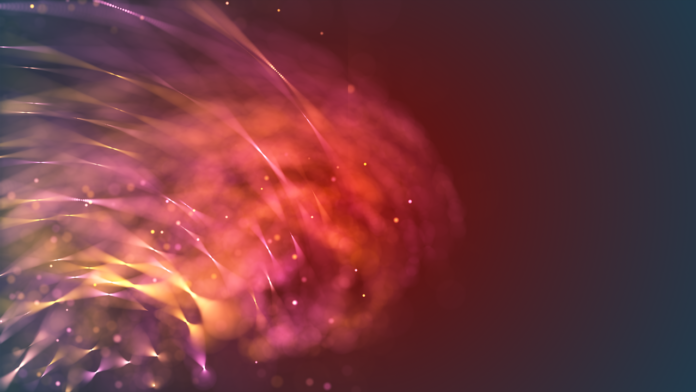The entertainment industry is on the cusp of a major revolution, largely driven by AI in animated film releases. As artificial intelligence technologies continue to advance, they are reshaping the landscape of film production, marketing, and distribution. The impact of AI in animated film releases cannot be overstated, as these innovations are expected to drastically change how animated films are created, promoted, and consumed. From improving animation processes to offering personalized viewing experiences, AI in animated film releases is transforming the entire filmmaking ecosystem. In this article, we will explore the top ten things you need to understand about how AI is changing animated film releases and how these shifts will affect the future of animation in the film industry.
1. AI in Animation Production: Streamlining the Creative Process
The most direct impact of AI in animated film releases is in the animation production process itself. Traditional animation can be incredibly time-consuming, with animators spending countless hours on each frame. However, AI in animated film releases has enabled automation of many of the repetitive tasks that previously required manual intervention. AI tools can generate realistic character movements, environmental textures, and complex visual effects more efficiently than ever before.
For example, AI can assist in in-betweening, the process where animators create the frames that transition between two keyframes. AI-driven software can analyze the key poses and automatically generate intermediate frames, saving animators valuable time and allowing them to focus on more intricate details. AI can also assist with rendering, reducing the time required to produce high-quality animation.
Furthermore, AI tools are increasingly capable of recognizing patterns in previous work, allowing them to suggest creative improvements or variations. These systems not only streamline the creative process but also increase the overall quality of animation, making it more dynamic and detailed.
2. Personalized Content: AI and Tailored Viewing Experiences
One of the most significant changes AI in animated film releases is bringing is personalized content delivery. AI in animated film releases allows streaming platforms and studios to create tailored viewing experiences for individual audiences. By analyzing viewing preferences, historical data, and demographic information, AI algorithms can recommend specific animated films or tailor movie experiences based on user behavior.
For instance, platforms like Netflix already use AI-powered recommendation systems that suggest films based on the viewer’s past preferences. In the context of animated films, this means that viewers can be presented with personalized recommendations based on their tastes in animation style, genres, or even specific characters they are likely to enjoy. This personalized approach enhances user engagement, increases watch time, and promotes the discovery of new films that might have been otherwise overlooked.
3. AI-Generated Characters and Voice Synthesis
Another area where AI is changing animated film releases is in the creation of characters and voice performances. AI has the ability to generate realistic, engaging animated characters that can be used in film. Using machine learning algorithms, AI systems can analyze character designs and generate variations, creating new characters based on existing parameters like age, gender, and personality.
Moreover, AI in animated film releases is transforming voice acting by synthesizing realistic, human-like voice performances. AI-powered voice generation tools can now create dialogue using synthetic voices that are indistinguishable from those of human actors. This is especially useful for animated films that require voiceovers for numerous characters, reducing the time and cost spent on hiring voice actors for each role.
While human voice actors will remain integral to many animated films, AI-generated voices offer a cost-effective alternative for studios, especially for minor characters or background voices. This ability to generate realistic voices will also open up new opportunities for creative experimentation in animated films.
4. AI and Real-Time Animation Adjustments
The traditional animation process involves a lot of back-and-forth and revisiting earlier stages to refine the animation. However, AI in animated film releases is helping filmmakers make real-time adjustments to their animations. Using AI-based systems, animators can instantly modify character movements, facial expressions, and backgrounds, even during production.
This real-time editing capability allows for faster iterations, giving creators more flexibility to experiment with different animation styles, visual effects, and storytelling techniques. AI-powered software can also assist in detecting errors, such as unnatural movements or inconsistencies in lighting, and suggest corrections in real-time.
By automating these adjustments, AI in animated film releases makes the entire animation process more agile, helping studios meet tight deadlines and adapt to feedback quickly.
5. AI-Driven Scriptwriting and Story Generation
AI is making its mark not only on the visual aspects of animation but also on the storytelling process. AI in animated film releases can help with scriptwriting and story development by generating ideas, dialogue, and plotlines based on pre-existing content or specific criteria. AI-powered writing assistants can suggest plot twists, character development arcs, and even dialogue that is consistent with the established narrative.
Using natural language processing (NLP) and machine learning, AI can analyze successful animated films and extract patterns that resonate with audiences. These patterns can then be used to craft new stories that align with the preferences of viewers, ensuring the content is more engaging and likely to succeed.
While AI will not replace human writers, it provides an invaluable tool for brainstorming and refining story ideas, helping writers explore new creative possibilities that might not have been considered otherwise.
6. Improved Visual Effects and Graphics in Animation
The integration of AI in animated film releases is also transforming the way visual effects (VFX) are used in animation. AI-powered tools can automatically generate complex VFX, such as dynamic lighting, weather effects, and particle systems, which are essential to creating immersive animated worlds. These visual enhancements, which would have taken significant time and effort from visual effects artists, can now be produced with far more efficiency.
AI can also assist with post-production by automatically enhancing visuals in terms of color grading, texture application, and rendering quality. This allows for the creation of stunning, high-quality animations at a fraction of the time and cost compared to traditional methods. The combination of AI in animated film releases and advanced VFX techniques will take animated films to new levels of realism and creativity.
7. AI and Audience Data: Predicting Trends and Success
In an industry where success often depends on audience reception, studios are increasingly using AI to predict the potential success of animated films. By analyzing large datasets—such as social media reactions, box office trends, and previous movie performance—AI can predict how well a specific animated film is likely to perform with different audiences.
AI can also help studios track trends and predict the kinds of animated genres, characters, or storylines that will be popular in the coming years. By analyzing consumer behavior, preferences, and reactions to similar films, AI helps studios make more informed decisions on what content to produce, reducing the risk of failure and maximizing the likelihood of success.
8. AI-Powered Marketing and Distribution
Effective marketing and distribution are crucial for the success of animated films. AI has revolutionized these areas by automating many of the processes involved in reaching the right audiences. AI in animated film releases helps marketers create targeted advertising campaigns that reach specific demographics based on viewer behavior, geographic location, and even personal interests.
Through AI algorithms, marketing teams can analyze data from various platforms—such as social media, video streaming sites, and websites—to develop marketing strategies that resonate with the intended audience. This level of targeting is more precise and effective than traditional methods, ensuring that promotional content reaches the right people at the right time.
Moreover, AI can assist in determining optimal release windows, tracking audience engagement, and adjusting campaigns accordingly to maintain momentum throughout the film’s lifecycle.
9. Enhanced Audience Engagement through AI-Powered Interactive Features
The rise of interactive storytelling is another area where AI in animated film releases is making a significant impact. Some animated films are incorporating interactive elements where viewers can influence the direction of the story. AI allows for real-time adjustments based on user choices, creating a more immersive experience.
For example, AI systems can analyze user decisions and adapt the narrative to reflect their choices, leading to a personalized and engaging viewing experience. This type of interaction can be particularly effective in animated films for children, where educational content and fun can be combined with interactive features that engage young audiences.
10. AI’s Role in Post-Production and Final Edits
Finally, AI in animated film releases plays a vital role in post-production, assisting with editing, sound design, and even final rendering. AI-driven tools can analyze the pacing of a film, suggest edits to improve flow, and enhance dialogue clarity. In addition, AI can be used for audio mixing and mastering, ensuring that the final soundtrack complements the animation.
AI-powered tools can also help with final rendering, reducing the time needed to complete the animation process. This efficiency enables studios to meet tight deadlines and release high-quality films on schedule.
Conclusion
The impact of AI in animated film releases is far-reaching, touching almost every aspect of the filmmaking process. From enhancing creativity in animation production to offering personalized content and marketing strategies, AI is revolutionizing how animated films are made, distributed, and consumed. As AI technologies continue to evolve, we can expect even more groundbreaking innovations that will further transform the landscape of animated films, offering new opportunities for filmmakers and audiences alike. Whether in content creation, distribution, or audience engagement, AI’s influence on animated film releases is only beginning to unfold, promising a bright future for the animation industry.














